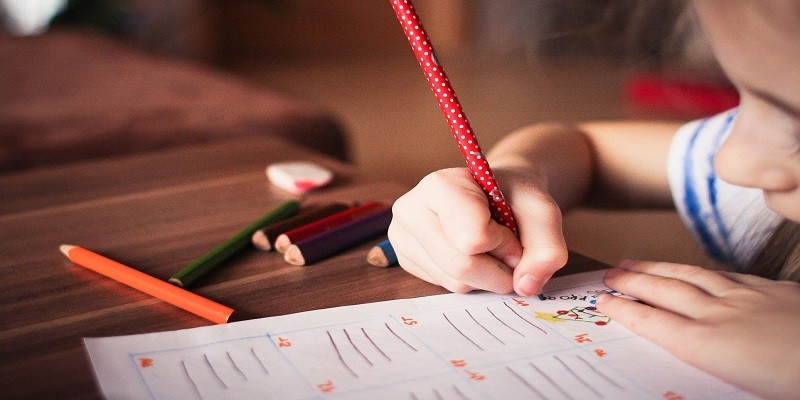Last Updated on July 25, 2023
Sending your child to school is a huge milestone, but it also means putting in more effort in bringing them up. Many parents might worry about their children lagging in their studies at some point. For some, the issue might be a genuine learning problem that requires professional intervention.
Universal free preschool is now on the horizon for Colorado. This aspect of early childhood education places a lot of importance on children getting a good learning environment. With this in mind, it’s even more essential for children to try and keep up in today’s fast-paced world.
No matter what age they are, children are learning something all the time. The world is now full of technological updates. Overall, one might say that children, especially in a modern and developed area like Colorado, need to be as fast in learning as possible. The quicker they pick up skills and cues, the easier they can understand the world around them.
How can we help children become faster learners?
When we speak of fast learning in children, we may not necessarily mean the speed at which they can memorize lessons. The focus is more on helping them achieve their maximum learning potential. Through learning a concept, they will understand how to use and apply it for their benefit.
So, how can we help our child learn faster? The first step is probably to get them into the best nature and play focused preschool in Colorado. Here are a few more steps to take when pursuing this learning goal:
1. Let the child and yourself accept mistakes
Whenever a child is learning a new concept or process, they will probably make a few mistakes. These may include dropping a jug of dried beans, spilling water while pouring it, or calculating a sum incorrectly.
As parents, teachers, and guardians, we must understand that mistakes are part of the journey. When a child makes some mistakes in the initial stages of learning, they need more encouragement to start all over again.
The mindset here should not be about wasting time or other resources. Instead, we need to concentrate on making the child comfortable with continuing to learn and not quitting.
How to make the child comfortable after a mistake?
While every child is different, we may assume they need reassurance after making a mistake. After a mishap, a trusted person, like a parent or teacher, can take them aside. They can then explain how the mistake does not mean that the child’s character is negative or that they can’t master the concept. Rather, the mistake is a step in the learning process.
With such methods, we can convey how the child can look upon mistakes as a way to learn. They might still regret a mistake, but they won’t overthink them. Sincere and gentle guidance in such cases can help a child learn more quickly, move on, and apply their new knowledge better.
2. Teach them how to ask for help
At times, children may avoid asking for assistance or help. Even if they trust their parents or teacher, they might fear being called inattentive, stupid, or other labels.
With this in mind, we should teach our children that asking for help is commendable. Teachers and parents should encourage students to ask for help whenever they are stuck or confused.
Knowing when they need assistance can help students move on with a subject. If they don’t know how to ask for help or are too embarrassed to speak up, they might remain confused. They might then fall behind in the class and lose confidence in themselves.
Gaining from other people’s expertise
Asking for help is one of the best ways to gain knowledge from another person. Someone else might have a lot of experience and knowledge in a certain subject. When you ask them about a concept or share an insight, they can help students learn more efficiently and quickly.
3. Teach them how to stay focused
With better focus comes better learning. There are many ways in which a parent may teach their children some focusing techniques. These can help them later on in life, even after finishing school.
Here are some tried and tested focusing methods every student can use:
- Find a place that has an atmosphere of learning without distractions
- If you don’t have a quiet, distraction-free place at home, try the library
- Try making a quiet area, such as a favorite spot in the park, or investing in soundproofing
- Do not multitask while you’re learning, as you may lose focus on your task; distractions will slow down the learning process.
Having a better focus will usually lead to efficient learning. Ensure your child knows the importance of focus and how to achieve it.
4. Whenever possible, make notes
Writing down concepts as you hear about them is a proven effective learning method. Some students may even want to make notes while reading directly from their textbooks.
Selective analyzing
One reason for writing being so effective is the matter of selectivity. A child needs to be particular about what they write and what they don’t. They also make their notes in such a way that they can easily understand them better.
Paraphrasing skills
When students take notes while the teacher is speaking, they can better understand the subject. They write the concepts down in their own words. Paraphrasing like this shows us how much a student has learned.
How to take notes?
Writing with a pen or pencil on paper is still the most effective method of taking notes. Writing helps form strong connections in the brain and serves for better recall later on.
On a laptop, on the other hand, students usually end up transcribing a lecture instead of learning from it. This is a pity, as it also means that the students might not have understood the lecture at all.
5. Regular exercise and sleep
What’s the connection between a child not learning and not exercising? According to several studies, physical activity can release chemicals in the brain, including endorphins, testosterone, and serotonin. Endorphins can enhance focus and concentration.
Moreover, physical activity can assist in forming stronger brain neural connections. As a result, students may develop a better memory, polish their problem-solving skills, and speak a language better.
Conclusion
While there’s no golden rule for making a child learn more quickly than others, the tips above should motivate you to take the first step. Are you ready to start learning with your student or child? Choose one of these tips and implement it for a week; you will hopefully see a difference very soon.







